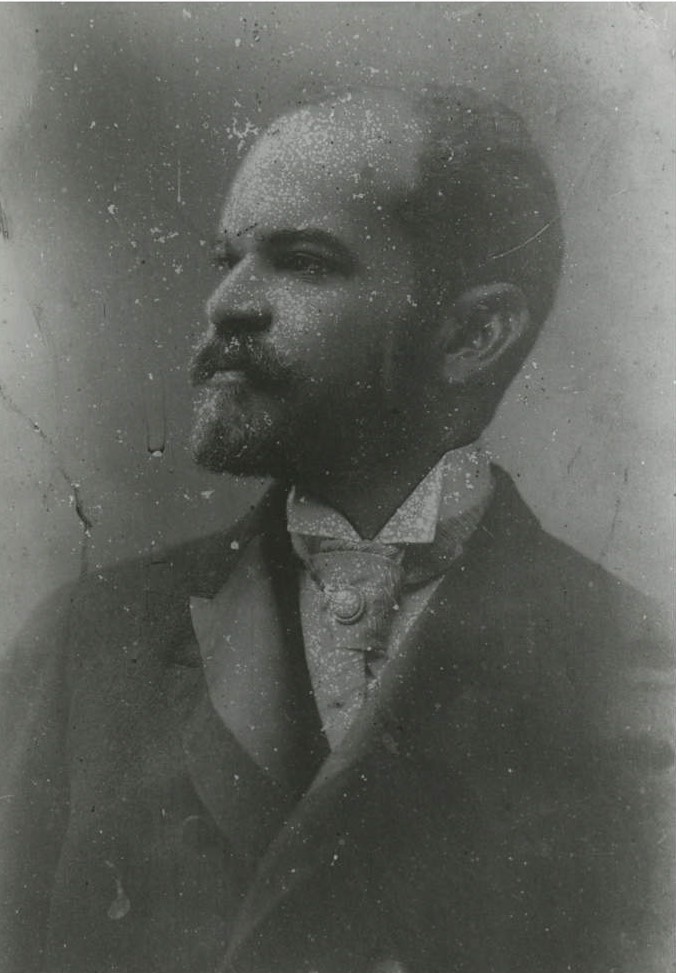Alejandro Woss y Gil
Alejandro Woss y Gil (born May 5, 1856 in El Seibo , † November 28, 1932 in Santo Domingo ) was a Dominican politician and President of the Dominican Republic .
biography
After attending school, he studied law and later worked as a lawyer before joining the forces of Ulises Heureaux and becoming general of the Dominican army himself .
After the resignation of President Francesco Gregorio Billini , whose Vice-President he had been since September 1884, he succeeded him as President of the Dominican Republic on May 16, 1885 at the age of just 29 years . In economic terms, his government was characterized by the establishment of phosphorus and candle factories , but also by the signing of foreign trade agreements with other countries. On the other hand, there were ongoing clashes with his political opponents about the former President Cesareo Guillermo , whose arrest and persecution he had carried out by General Heureaux. After Guillermo's suicide on November 8, 1885, this led to the renewed rise of Lilís Heureaux to power, so that he succeeded Woss y Gil as president on January 6. During the reign of Lilís Heureaux, he was a foreign minister (Secretario de Relaciones Exteriores) and later as a war and naval minister (Ministro de Guerra y de Marina) in his cabinet. Between 1896 and 1899 he was envoy to Washington, DC , where he tried to improve economic relations.
On March 23, 1903, he was then again President of the Dominican Republic, after he had toppled the previous President Horacio Vásquez at the head of a revolt . First he was the interim president, before he officially took office on June 20, 1903, after being elected by an electoral committee on April 27, where he received 509 of the 537 votes, and took his oath of office on August 1, 1903 . When he took office, he found the country bankrupt due to the debts it had taken on in recent years and embargoes that were imposed . This led to his intention to sell parts of the national territory , but this led to his overthrow by the army under General Carlos Felipe Morales on November 24, 1903 . This uprising went down in Dominican history as the Unionista Revolution, because the previous opposing camps of the Horacista, the supporters of Horacio Vásquez, and the Jiminista, the partisans of President Juan Isidro Jiménez , overthrown by Vásquez in 1902 , in the joint fight against Lilísismo , the movement of the followers of Lilís Heureaux and Woss y Gil.
After his fall, he went into exile . After his return in 1912 he resumed his work as a lawyer, but withdrew from political life until his death. His daughter is the well-known Dominican painter Celeste Woss y Gil (1890–1985).
swell
- Homepage of the Ministry of Culture (National Archives) ( Memento from October 16, 2008 in the Internet Archive )
- WIKIDOMINICANA ( Memento from April 3, 2009 in the Internet Archive )
- HISTORIADOMINICANA ( Memento from April 11, 2008 in the Internet Archive )
- History of the Dominican Republic ( Memento from October 29, 2007 in the Internet Archive )
- GOBIERNOS DOMINICANOS ( Memento of October 12, 2007 in the Internet Archive )
- Dominican Republic. 1848 to 1986 Presidential Election Results
Individual evidence
- ^ Dominican Republic. ULISES HEUREAUX, 1882-99
- ^ Dominican Republic. 1848 to 1986 Presidential Election Results
- ↑ Ralph Dietl: USA and Central America: The Foreign Policy of William J. Bryan, 1913-1915 . In: Contributions to colonial and overseas history . tape 67 . Franz Steiner Verlag, Stuttgart 1996, ISBN 3-515-06914-3 , pp. 163 ( limited preview in Google Book Search [accessed January 22, 2017]).
- ↑ Celeste Woss y Gil. Una artista de la República Dominicana ( Memento from September 23, 2012 in the Internet Archive )
| predecessor | Office | successor |
|---|---|---|
| Francesco Gregorio Billini |
President of the Dominican Republic 1885–1887 |
Ulises Heureaux |
| Horacio Vásquez | President of the Dominican Republic 1903 |
Carlos Felipe Morales |
| personal data | |
|---|---|
| SURNAME | Woss y Gil, Alejandro |
| BRIEF DESCRIPTION | President of the Dominican Republic |
| DATE OF BIRTH | May 5, 1856 |
| PLACE OF BIRTH | El Seibo |
| DATE OF DEATH | November 28, 1932 |
| Place of death | Santo Domingo |
